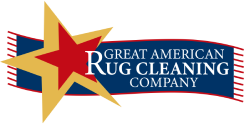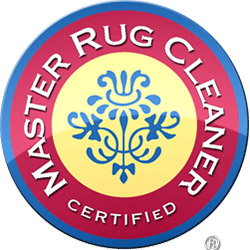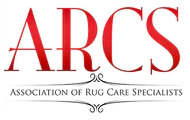Key Customer Queries
Frequently Asked Question & Answer
Are all rug cleaning businesses the same?
The rug care industry is no different than other industries. The most qualified rug care specialists distinguish themselves by their experience, in-depth knowledge of rugs, technical excellence, and customer service. For example, the best rug care specialists will be able to identify your rugs based on rug type, where and when it was made, and how it was constructed. This information is necessary to determine the best cleaning method.
Are Persian (Iranian) rugs better than rugs from other countries?
Some older, traditional pre-World War II Persian rugs, such as Ferahan Sarouk, Motashem Kashan, Tabriz, Bijar and Heriz pieces, will always have a market. However, beginning in the 1960′s, the quality of Persian rugs has gradually deteriorated. Since the fall of the Shah of Iran in 1979 and the embargo on Persian goods in 1987 (which was lifted in 1999), other countries have improved the quality of their rugs and increased their output. It is our opinion that the quality of Persian rugs will return slowly.
Are all old rugs valuable?
A rug’s value depends on many things, including the type of rug, how and when it was made, its artistic merit, and its condition. An old rug in poor condition is just an old rug; however some old rugs are worth repairing to restore their beauty, usefulness, and value.
Do all oriental rugs appreciate in value?
Most oriental rugs made after World War II, including those made today, will not appreciate in value.
Are oriental rugs identified only by design?
Design is just one of many elements that can identify oriental rugs. The entire process is a technical analysis, which includes the materials used to make the rug, method or construction, dyes and design.
Is knot count the best indication of a rug’s value?
Mass produced rugs are partially priced depending on the knots per square inch – the higher the knot count the higher the price. However, this does not have an effect on resale value on the secondary market. Some Persian and silk rugs are, in part, valued based on their knot count.
Is it common for the latex on the back of a rug to deteriorate?
Latex is an adhesive that anchors tufts to the primary backing, adds dimensional stability, and attaches a secondary backing to the rug. Latex will commonly break down due to things like gases in the air, floor waxes, traffic and sunlight. Deterioration generally appears as bubbles, powdery residue, or backing separation.
Is padding necessary for oriental and area rugs?
Rug pads are highly recommended for any rug. They can prolong the life of a rug, as well as prevent slippage and reduce noise.
Why do oriental rugs have color variations that appear as horizontal bands?
The color variations are simply the nature of any hand-made item. One of the most common characteristics of true oriental rugs is the color variation known as abrash. Abrash variations may appear as horizontal bands and can be subtle in shade or very distinct. These variations should not be considered defects, but seen as characteristics of the many variables that went into creating the rug.
Why do rug fringes darken and wear so quickly?
Fringes deteriorate easily with normal foot traffic, vacuuming, cleaning, and other conditions. Because of their tenuous nature, fringes need to be replaced periodically.
What causes dye bleeding?
Dye bleeding can be caused by any number of things. Sometimes when rugs are washed, the dyes may weaken and bleed during the cleaning process. This can be due to defective dyes or dye methods, after-market painting or even pet urine and over-the-counter spot removers.
Why do little white knots appear on the surface of a rug after cleaning?
White knots are caused by breaks in a rug’s foundation when it is still on the loom. The breaks are spliced together by tying two knots at each end of the break. When the rug is new, the full length of the pile can obscure these white knots. Eventually foot traffic, as well as a thorough cleaning, will reveal these knots. They should never be cut, which would create a weakness in the rug’s foundation.
What types of soils are found on rugs and carpets?
There are three types of soils typically found on rugs. The first is spots, which can be removed, and stains, which can be permanent. The second is unattached surface litter, such as gritty dirt tracked in by feet, pet hair, lint, etc. Gritty soil scratches and dulls fibers and should be vacuumed at least once a week to reduce damage and extend the life of the carpet. The third type of soil is oil and greases containing tiny pieces of soil material, which adhere to the fibers in rugs and carpets. Professional cleaning can remove this type of soil. However, the longer it is on the fibers the more difficult it is to remove.
Can rugs be professionally cleaned in my home?
Rugs should never be cleaned at your home unless there are extenuating circumstances, such as size or weight, which prohibit them from being transported for cleaning. This is not an issue when doing business with qualified, professional rug cleaners. In-home cleaning leaves soap and residuals in the rug that causes it to re-soil quickly. In addition, the fringe cannot be cleaned in-home, and inadequate drying may cause the rug to mildew.
Is it safe to vacuum Oriental rugs?
Oriental rugs can and should be vacuumed often. Most of the soil in rugs is dry particle matter, which can act as sand paper to accelerate wear if it is not removed. Thicker rugs even run the risk of the soil being impacted over time, rendering them near impossible to clean completely.
How does periodic professional cleaning improve the beauty and value of my rug?
Periodic cleaning by a qualified professional removes the soil that dulls color and reduces the luster of wool. Regular cleaning can also prevent problems such as moth infestations, which can damage and seriously affect the beauty and value of a rug. Oriental rugs should be cleaned every one to five years, depending on their location and traffic, to maintain their appearance, condition, and value.
My pet had an accident. What should I do?
If your pet has an accident on your rug, it’s important to quickly absorb as much of the liquid as possible. After that, cover the area with a 50/50 mixture of vinegar and water then blot (do not rub) the solution up. Over-the-counter spot removers are typically too harsh, containing ingredients such as bleach, and should be avoided.






